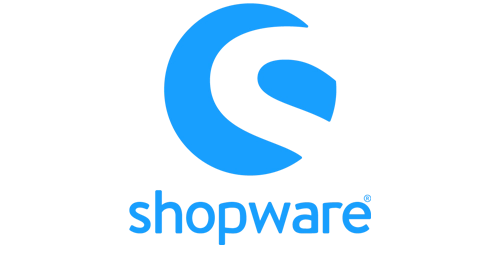
Shopware
Shopware is a flexible, API‑first e‑commerce platform that helps brands and retailers launch high‑converting storefronts with rich content, advanced variants, and B2B tools - ideal for scaling multi‑language, multi‑store sales in DACH and beyond.
Why sell on
Shopware
Shopware + shopvibes: Connect via Excel or API to publish clean, consistent product data at scale
About
Shopware
TL;DR
Shopware is a Germany‑born, API‑first commerce platform (founded 2000) trusted by mid‑market brands and retailers across Europe and beyond, known for its open architecture, strong B2B/B2C capabilities, and a mature partner ecosystem—ideal for scalable, multi‑store and multi‑language catalog operations.
Who is Shopware?
Shopware is an independent European commerce platform vendor founded in 2000 in Schöppingen, Germany. With open‑source roots and commercial cloud/self‑hosted offerings, it has grown from a DACH leader to an international player with teams and partners across EMEA and North America. The platform serves mid‑market to upper‑mid‑market merchants in both B2C and B2B.
What makes Shopware stand out?
Shopware focuses on composable, API‑first architecture (Shopware 6) that supports headless storefronts and integrations. Merchants value its flexible data model (variants, custom fields, attributes), multi‑store and multi‑language readiness, and robust B2B features. A large agency and technology partner network plus an extensive extension marketplace help brands accelerate projects and reduce integration risk.
Where does Shopware operate strongest?
Historically strong in the DACH region, Shopware has expanded across the EU and is growing in the UK and North America. It’s well suited for companies managing localized catalogs, currencies, and tax setups across multiple markets.
Why does this matter for your catalog strategy?
If you handle broad assortments or frequent product updates, Shopware’s structured data and open APIs provide a reliable backbone for consistent, channel‑ready product information—making downstream listings faster and less error‑prone.
Fast facts
- Market focus: Mid‑market brands and retailers, B2C and B2B
- Architecture: API‑first, headless‑ready; cloud and self‑hosted editions
- Ecosystem: Established agency network and extension marketplace
- Strengths: Multi‑store, multi‑language, flexible product data, scalable for high SKU volumes
Seller fees
Platform Fees (recurring)
How to sell on
Shopware
Option A – Excel upload workflow
- Prepare your product data
→ Ensure your catalogue is complete: GTIN/EAN, product title, description, images, categories, pricing, stock. - Upload your Excel template to shopvibes
→ Upload the Excel file or template you’ll use for Shopware. shopvibes will map your data, fill the file automatically, and validate completeness. Our team is happy to support you in setting up a proper export - Download the ready-to-upload file and submit it to your Shopware store
→ Use your Shopware admin “Import/Export” section or an extension to upload the sheet. - Go live and manage updates
→ When you update your master catalogue in shopvibes, you regenerate a new Excel and upload again - keeping your Shopware store in sync.
Option B – API integration workflow
- Obtain API credentials
→ Within Shopware 6, go to Settings → System → Integrations to create a new integration. You’ll receive an access ID and security key. - Connect via shopvibes' shopware API integration
Reach out to the shopvibes team to get your API connection set up and to ensure everything works correctly - Test and validate data flow
→ shopvibes checks the data before push; send test items to ensure correct mapping and status updates. - Go live and keep synchronised
→ Once live, your updates (stock, price, content) push automatically from shopvibes to Shopware in real time with minimal manual effort.
How shopvibes can help you
shopvibes abstracts the technical integration hassle. Whether you use Excel or API, your product data workflow stays clean, centralised and efficient.
Why brands use shopvibes for Shopware integrations:
- Choose your workflow
Work with Excel if you prefer spreadsheets, or API if you want full automation. - One central catalogue
Manage your product data in shopvibes; distribute to Shopware and other channels without recreating for each. - Format- & schema-compliance
shopvibes maps your data to match Shopware’s import or API schema, reducing errors and rejections. - Rapid onboarding
Whether uploading Excel or connecting API, you launch faster, with fewer manual steps. - Scalable for multi-channel growth
Start with Shopware, then expand to other retailers using the same shopvibes infrastructure.
With shopvibes, integrating with Shopware becomes part of a broader distribution strategy instead ofa one-off upload project.


